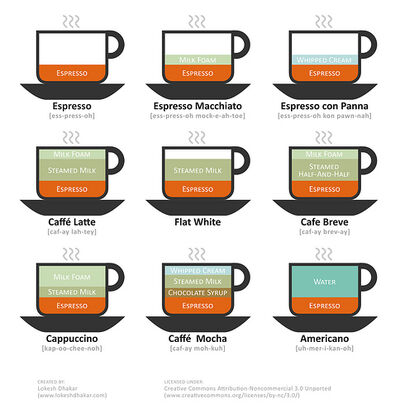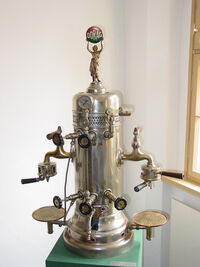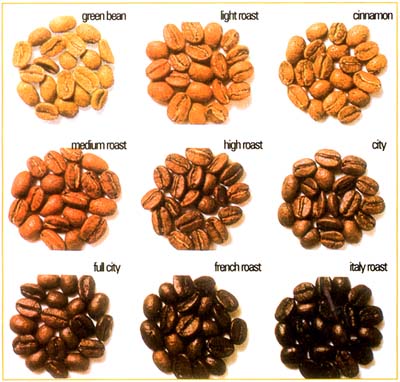Which do you crave in the morning—a cup of java or a
spot of tea? Popular belief labels tea as a health drink and coffee as
bad. Not so! Mounting evidence suggests that both are good for you because they're brimming with antioxidants.
What are antioxidants?
Antioxidants are phytochemicals,
chemicals found in plant foods. In our bodies, antioxidants protect
healthy tissues from "oxidants," also called free radicals. Over time,
free radicals can damage cells and cause disease. Antioxidants are like
microscopic police officers who seize these bad guys that plan to harm
our cells.
What's sweet about tea?
Tea leaves come from an evergreen plant called
Camellia sinensis.
The way the leaves are processed determines if they become black or
green tea. All teas contain a group of antioxidants called flavonoids.
Tea is the second most consumed beverage in the world,
next to water. Green tea is especially popular in Japan and China.
But on any given day, only one in five American adults drinks tea,
according to a study published in the Journal of the American Dietetic
Association. That's a shame, because tea drinkers in the study took in
20 times more flavonoid antioxidants per day than tea non-drinkers.
That's amazing!
Experts say tea provides as many disease-fighting
flavonoids as fruits or vegetables. Many brands of tea list antioxidant
and caffeine content (in milligrams per serving) right on the box.
Which diseases does tea fight?
Laboratory studies using tea and tea extracts on rats,
mice, and human cells show promising results. They suggest that tea may
reduce cholesterol levels, help prevent blood clotting, lower the risk
of Alzheimer's and Parkinson's disease, and even fight inflammation,
cancer, and seasonal allergies.
Studies of tea-drinking humans suggest these possible health benefits:
* Black and green tea may lower risk for ovarian cancer.
* Green tea may reduce breast cancer risk.
* Green tea may decrease death rates from heart disease.
Based on this evidence, perhaps tea ought to be the
beverage of choice for women. For me, the fact that tea contains tons
of antioxidants is reason enough to drink it, even if we haven't
discovered all the disease-fighting benefits yet.
Which kind of tea is best?
Most herbal teas are not tea at all.
They are made with roots, flowers, herbs, or spices and contain no tea
leaves and therefore no tea flavonoids. A few herbal teas contain real
tea leaves with added spices. Read the ingredients label to be sure of
what you're drinking.
Researchers say green tea has more antioxidants because
the leaves are less processed, but some people don't like its unique
flavor. Since both black and green tea are antioxidant-rich, drink the
kind you like best.
If green tea is new to you, blend it with black tea the
first time you try it. Place one black tea bag and one green tea bag
together in boiling water to make a large mug. Steep for three to five
minutes, no more, to bring out the antioxidants but avoid a bitter
flavor. I brew this blended tea every day using decaf tea, even though
it's a little lower in flavonoids.
Hot brewing releases phytochemicals, so when making
homemade iced tea, you may want to brew it and then add ice. When
you're on the go, buying a bottle of iced tea is a good option, too. A
comparison of convenience teas showed significant antioxidant content
in major brands. Just be aware that most sweetened teas are loaded with
sugar.
What's the scoop on coffee?
In the U.S., coffee is king of beverages—millions
start the day with the aromatic brew. Researchers named coffee as the
number one source of antioxidants in the American diet, partly because
of the volume we consume. Black tea ranked second.
Coffee contains antioxidants such as quinines and
chlorogenic acid. It also contains trigonelline, an anti-bacterial
compound that contributes to coffee's delicious aroma.
Which diseases can coffee fight?
Research suggests coffee may lower the
risk of liver cancer, colon cancer, Parkinson's disease, type II
diabetes, and gout.
The jury is still out on whether or not coffee raises
the risk of heart disease in some people. Research shows conflicting
results, so more study is needed. According to the American Heart
Association, one to two cups of coffee per day does not seem to be
harmful. To be on the safe side, discuss caffeine intake with your
doctor if you have heart disease or high blood pressure.
What about caffeine?
The caffeine content of coffee and tea
vary depending on the size of your cup, what kind is used, and how it
is made. An 8-ounce cup of brewed coffee has about 85 milligrams of
caffeine compared to 40 milligrams in a cup of hot tea.
Caffeine stimulates the brain and nervous system to
cause that pick-me-up feeling. But keep in mind that caffeine is a drug
and should be limited to avoid overload symptoms. If caffeine keeps
you up at night, switch to decaf in the afternoon.
New research links caffeine consumption with possible
increased risk of miscarriage. So if you're pregnant, stick to decaf
beverages and talk to your doctor about caffeine.
What about fruits and veggies?
Since coffee and tea are high in
antioxidants, can they replace fruits and vegetables in our diets?
Absolutely not! Fruits and veggies supply fiber, essential vitamins and
minerals, plus a variety of different antioxidants that promote good
health.
A word of caution
Plain coffee and tea are healthful,
calorie-free beverages. Be careful how much cream, sugar, and
flavorings you dump into your cup. Just 1 tablespoon of cream and 2
teaspoons of sugar can add up to 80 calories and 6 grams of fat. Squirt
in flavored syrup, pile on whipped cream, and your once-healthful
drink becomes a rich dessert.
Which is better—coffee or tea?
Science can't really say one is
superior to the other, so fill your mug with whichever brew you like.
To benefit from both sets of antioxidants, try this: drink one or two
cups of coffee in the morning, then enjoy tea throughout the day.
The next time you warm your hands around a steaming cup, thank God for His gift of antioxidants. Bottoms up!
From:
http://www.cbn.com/health/nutrition/reinke_coffeetea.aspx






































